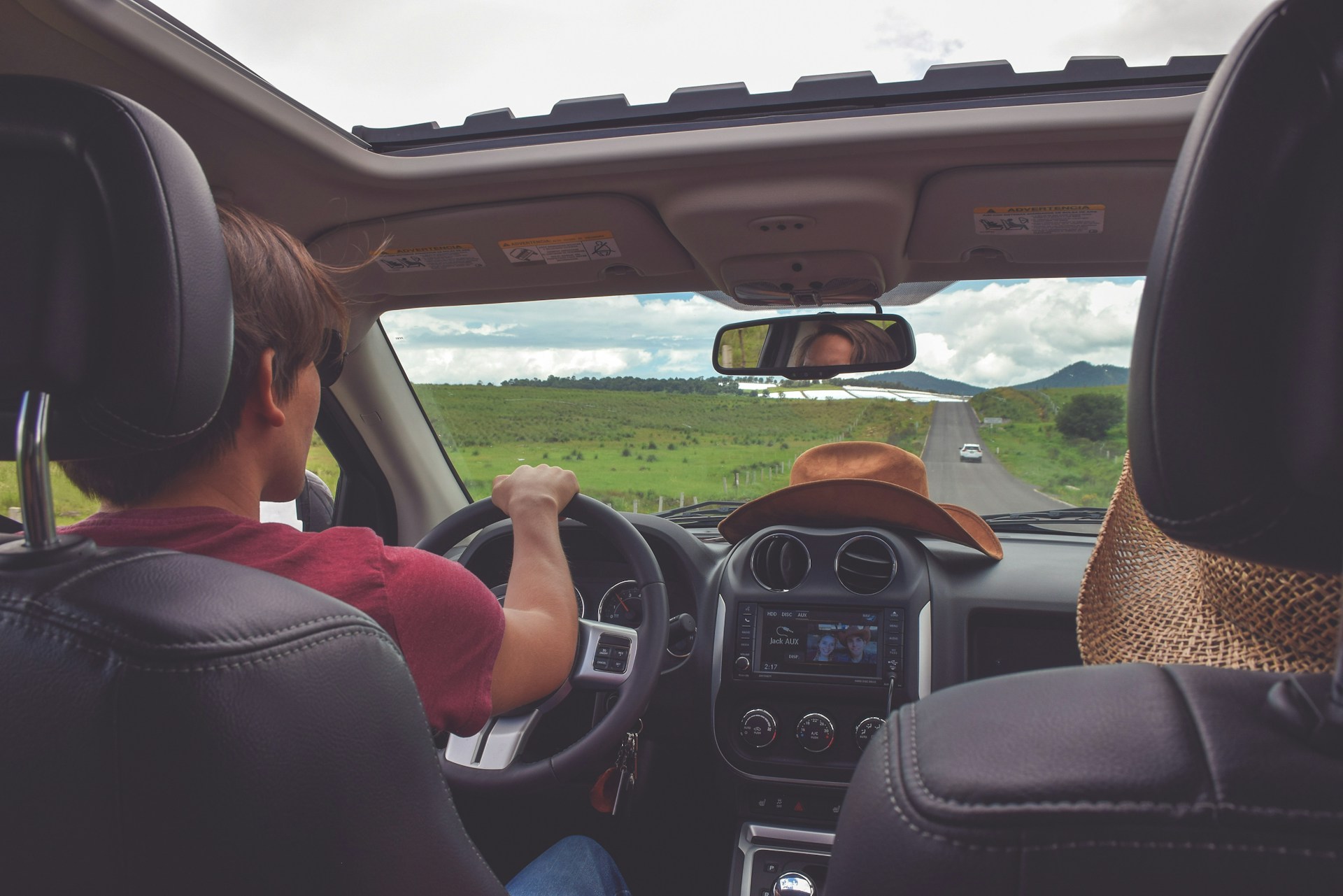Safety Driving Tips For Summer Trips
by Mony Shah Our Blogs 04 May 2024

Prior to hitting the road this summer, ensure you’re all set for a safe trip. At the same time, check your vehicle’s fluids, brakes, and tires to evade unexpected issues. Plan your route ahead, including the places of rest. Remember to use travel applications for updates on traffic.
Don’t forget to include the items you need, like a first aid kit, snacks, and water to stay hydrated and energized.
Wear a pair of sunglasses to cope with the glare of the sun. Regular breaks are a must to maintain focus and energy.
Keeping an emergency kit in your car is always a good idea. Following these tips assists in promoting a smoother, safer drive.
If you encounter any issues on the road, consider contacting Goldenzweig Law Group, an auto collision lawyer. Are you curious about getting more insights into enhancing your journey? You can explore plenty of things.
Vehicle Maintenance Checklist
Before hitting the road this summer, make sure you maintain your vehicle’s maintenance checklist.
However, one of the first things you should maintain is checking the fluid levels of your body. This isn’t just about your oil, though that’s crucial. You’ll also need to check your brake fluid, coolant, and windshield wiper fluid.
Moreover, the ummer heat can rob all of your vehicle’s engine and cooling system. Hence, maintain them all to ensure proper levels are maintained. Yes, it is vital to prevent overheating and ensure everything runs with the utmost smoothness.
Next, don’t overlook the brake checks. This is a critical element of your safety, especially when you’re planning long drives.
Have a professional perform a thorough check-up of the brake pads and rotors to make sure they are proper in case of any issues.
Additionally, they will check the brake fluid level. This is one of the key aspects of an effective braking system. Keep in mind that brake failure can be fatal, so this isn’t the place to cut corners.
Proper Tire Inspection
Before you hit the road this summer, it’s crucial to check your tire pressure at a regular interval to ensure safety and efficiency.
Moreover, you will want to inspect the tread patterns. Uneven wear can be a possible indication of issues with alignment.
Addressing these aspects can save you from sudden contingencies and keep your journey safe and smooth.
Check Tire Pressure Regularly
Regularly checking your tire pressure is crucial, especially during summer driving. Fluctuations in temperature can lead to ups and downs in tire pressure… it may invite risks uncalled for. So it’s essential to use a pressure gauge atleast once a month. You’ll not only ensure optimal performance but also improve the efficiency of your vehicle’s fuel.
Don’t rely just on visual checks. You may be misleading with the tires, but they can still be underinflated.
Instead, develop a habit of checking when the tires are cold. It is best if you do it in the morning before the days start, that is ideal. If you find any tire below the recommended pressure, inflate it to the advised level found in your car’s manual.
Hence these simple steps can make your journey joyous and free from accidents. Keep your summer road trips smooth and safe.
Inspect Tread Wear Patterns
After checking your tire pressure, examine the tread wear patterns. This thoroughly ensures that your tires are wearing evenly and safely.
Moreover, the uneven tread wear creates issues with wheel alignment. However, you may need to adjust your tire rotation schedule.
In addition, look for areas where the tread is more worn down than others. If the center is more worn, your tires might be overinflated. On the opposite end, wear on the edges of the tires suggests underinflation.
Uneven wear across your bike’s tire may point to alignment problems. Stay focused; poor alignment can lead to further tire damage and may even disturb the driver. Hence, you must stick to a regular tire rotation schedule.
It will help maintain even tread wear and also increase the tire’s longevity. Most importantly, it’s best for the driver’s safety.
Planning Your Route
Mapping out your route in advance can save you time and reduce stress on your summer road trip.
Start by pinpointing the key route landmarks that will guide your journey. These landmarks make navigating easier and offer great spots to rest, refuel, and capture memories.
In addition, you’ll want to use reliable travel apps to plot these points. Apps like Google Maps or Waze provide real-time traffic updates and alert you to any road closures or delays, ensuring you’re on the most efficient path.
It’s also smart to plan alternate routes. Unexpected roadworks or heavy traffic can throw a wrench in your plans, so having a backup can keep you moving smoothly.
Check these alternate paths for additional interesting sites or necessary amenities like gas stations and restaurants. This way, you’ll be prepared no matter what the road throws at you.
Lastly, don’t just rely solely on digital navigation. Technology can fail, so it’s wise to have printed maps or written directions as backups. This old-school method ensures you’re never truly lost, maintaining your journey’s pace and your peace of mind.
Packing Essentials for Safety
When you’re gearing up for a road trip, especially during the summer, packing the safety equipment is the key. Ensure you’ve got all necessary safety gear, from first aid kits to fire extinguishers.
Also, it is important to jot down the emergency contacts and ensure they’re easily accessible.
Essential Safety Gear
Before setting off on your summer road trip, ensure you’ve packed your safety essentials to keep yourself safe. Don’t overlook the significance of reflective clothing and hazard triangles.
If you’re stranded at night, reflective clothing can be highly effective in increasing your visibility to other drivers.
As a result, it can significantly reduce the risk of accidents. At the same time, setting up hazard triangles around your vehicle helps alert incoming traffic. Ultimately, it can help you lower down and navigate carefully around your stopped car.
It’s also wise to include a first aid kit for any minor injuries. At the same time, you must keep a flashlight with an extra set of batteries for nighttime repairs and adequate vision. Ensuring you’ve got these items can create a huge difference when it comes to maintaining safety on the road.
Emergency Contact Preparation
Have you updated your list of emergency contacts and ensured they’re easily accessible in your vehicle? It’s crucial, especially when you’re headed out on a summer road trip.
Alongside your contacts, pack a copy of your medical information. This should include any allergies, medications, and conditions that could be vital in an emergency.
Also, familiarize yourself with the local laws of your destinations. Knowing the specifics can help you avoid mishaps and ensure you’re prepared for any legal requirements, like carrying proof of insurance or specific vehicle equipment.
Lastly, store these details in your glove compartment or another safe spot. However, being prepared means you’re ready for fun and unexpected situations on the road.
Driving in Summer Weather
Summer weather can dramatically affect your driving conditions, so it’s essential to be prepared. One of the biggest challenges you’ll face is sun glare. This can severely reduce your visibility, especially during sunrise and sunset.
To combat this, always keep a pair of sunglasses in your vehicle and use your visor to block out the worst of the glare.
Additionally, ensure your windshield is clean both inside and out; even minor smudges can amplify the glare and make it harder to see.
Staying hydrated is another key aspect of driving in summer weather. Dehydration can lead to fatigue, decreased alertness, and slower reaction times. Hence, make sure you’ve got plenty of water with you, especially on longer trips. Don’t wait until you’re thirsty to drink; sip water throughout your journey to stay properly hydrated.
Handling Heavy Traffic
Navigating heavy traffic demands your patience. Moreover, you need strategic planning to ensure a stress-free journey. As you find yourself amidst many vehicles, it’s crucial to remain alert and keep yourself calm and composed.
Firstly, start by comprehending the traffic patterns of your route. Most urban areas experience rush hours in the morning, especially during the later part of the afternoon.
If possible, chalk out a comprehensive driving time around these peaks. As a result, it can help you avoid the worst congestion.
However, stay informed on the fly by tuning in to local radio updates. They’re most valuable for real-time traffic information.
Moreover, they can keep you alarmed by any accidents or roadwork that might require a detour. This immediate knowhow lets you have the adjustment to your route on the go. It can help you increase your savings, especially from long delays.
Always maintain a safe following distance. In heavy traffic, cars often stop abruptly, and having that extra space can prevent a fender bender. Also, keep an eye on the lanes. You’ll notice that some lanes move faster in certain areas; however, frequent lane switching can cause accidents.
Choose your lane based on your exit or turns ahead. Don’t try to break it as much as possible. By staying informed and planning ahead, you can navigate through congested roads more smoothly and safely.
Breaks and Rest Periods
Taking regular breaks during long drives not only boosts your alertness but also helps prevent fatigue. It’s essential to plan your journey with adequate rest stops, ideally every two hours or so. This interval allows you to stretch your legs, rest your eyes, and maintain a sharp focus on the road ahead.
Incorporating scenic stops into your route can make these breaks more enjoyable. These aren’t just opportunities to rest; they provide a chance to appreciate the beauty of your surroundings and make memories along the way.
Finding picturesque areas to pause not only enriches your travel experience but can also reinvigorate your energy for the next leg of the journey.
Keeping up with a hydration schedule is equally crucial. Dehydration can sneak up on you, leading to decreased concentration and increased irritability. Make sure you’re drinking water regularly throughout your trip. If you set reminders to hydrate during your breaks, you’ll stay refreshed and alert.
Emergency Preparedness
You should always have an emergency kit in your vehicle to handle unexpected situations during your summer road trips.
This kit isn’t just for peace of mind; it’s your first line of defense if things go awry, especially when you’re far from help.
Start by including basic supplies: water, non-perishable snacks, a first-aid kit, flashlights with extra batteries, and a multipurpose tool.
In areas prone to natural disasters like floods or wildfires, it’s critical to tailor your kit. Add items such as maps for alternate routes, a fire extinguisher, and emergency contact numbers.
Don’t forget to include blankets and additional clothing, which can be lifesavers during sudden weather changes or if you’re stranded overnight.
Medical emergencies can happen without warning. Ensure your first-aid kit is stocked with bandages, antiseptics, prescription medications, and pain relievers.
It’s also wise to keep a list of medical conditions and emergency contacts readily accessible. Familiarize yourself with basic first aid and CPR techniques—you never know when these skills might come in handy.
Lastly, maintain your kit regularly. Replace expired items and consider seasonal additions. Being well-prepared allows you to tackle any road trip with confidence.
Frequently Asked Questions
Summer heat can decrease your car’s fuel efficiency. Higher temperatures affect tire pressure and engine cooling, leading to increased fuel consumption. You’ll find yourself filling up more often during hot months.
Yes, polarized sunglasses are helpful because their lens technology reduces glare, improving your visibility. You’ll experience less eye strain, making driving more comfortable, especially in bright conditions. They’re definitely worth considering for your needs.
For long drives, choose snacks with easy-to-handle packaging and consider allergy considerations for everyone in the car. Opt for non-perishable, mess-free options that’ll keep you energized without distracting from the road.
To manage sun glare while driving, adjust your sun visors effectively and use dashboard mats to reduce reflections. These simple adjustments can significantly improve your visibility and make your drive safer.
Yes, the summer heat can indeed impact your car’s battery life. You should practice regular battery maintenance and take heat precautions to avoid failure. High temperatures accelerate corrosion and fluid evaporation inside the battery.
Conclusion
As you gear up for your summer road trip, remember these key points to ensure a safe journey.
Always check your vehicle, inspect those tires, and plan your route carefully.
Pack essential safety items and stay alert to summer weather conditions.
Navigate through heavy traffic with patience, take regular breaks to rest up, and be ready for any emergencies.
Following these tips, you’ll not only enjoy your trip but also keep yourself and your loved ones safe.
Safe travels!








































































































All Comments
10 Mint Mail
I’m often to blogging and i really appreciate your content. The article has actually peaks my interest. I’m going to bookmark your web site and maintain checking for brand spanking new information.